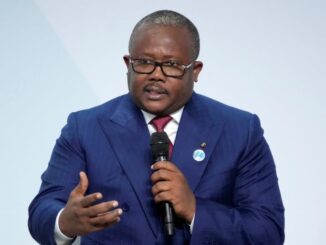
Salaries of top CEO got increased at the country’s top mutual fund houses during 2019-20 on robust business growth, with HDFC Mutual Fund’s Milind Barve being the highest paid executive.
According to an analysis of the data made public by mutual funds, the CEO salary given by the top 12 fund houses in terms of assets under management increased in the range of 2-100 per cent in 2019-20 from the preceding fiscal.
ET, however, CEO remuneration of Aditya Birla Sunlife MF, Nippon India MF and DSP MF dropped by up to 19 per cent during the period under review.
The salaries for chief investment officers also witnessed a rise for most fund houses.
Salary disclosed by the fund houses for 2019-20 was decided in April-May 2019 on the basis of 2018-19 profitability, which was at an all-time high for the industry, according to industry executives.
ALSO READ: Tech startups ask workers to trade in salary for stock
Overall, the past fiscal was a good year for the mutual fund industry barring the month of March, which saw record declines amid the coronavirus pandemic.
Barve, chief executive of second-largest fund house HDFC MF, claimed the top slot with a salary pay-out of Rs 7.43 crore for the fiscal. His package climbed by 3 per cent from Rs 7.23 crore in 2018-19.
SBI MF, which is the largest fund house in the country in terms of AUM, gave its CEO Ashwani Bhatia a salary of Rs 51 lakh in 2019-20. He had earned a salary of Rs 22 lakh in the eight months of preceding fiscal.
Bhatia, who had joined in August 2018, is the lowest paid CEO among the top fund houses.
Apart from SBI MF, fund houses like UTI MF and Kotak MF too gave a staggering salary hike to their respective CEOs.
Barve is followed by Nilesh Shah, the top honcho of Kotak MF, who received a pay package of Rs 7.32 crore, 68 per cent higher than Rs 4.35 crore received in the preceding fiscal.
ICICI Prudential MF paid Rs 6.98 crore to its Managing Director Nimesh Shah last fiscal, a hike of 12 per cent from Rs 6.25 crore in 2018-19.
Nippon India MF”s CEO Sundeep Sikka got a salary of Rs 6.01 crore, which is a decline of 8 per cent from last fiscal, while the same for A Balasubramanian, chief executive at Aditya Birla SunLife MF, was at Rs 5.41 crore, a decrease of 7 per cent.
IDFC Mutual Fund chief executive Vishal Kapoor”s pay package rose to Rs 5.12 crore from Rs 5.01 crore, translating into an increase of 2 per cent.
Chandresh Nigam, chief executive at Axis MF, got a salary of Rs 4.8 crore in the period under review as compared to Rs 3.97 crore in 2018-19.
However, he took home a pay package of Rs 17.67 crore, which included a one time pay-out.
UTI MF”s Acting CEO Imtaiyazur Rahman took home a salary of Rs 4.48 crore in the past fiscal, a 97 per cent jump from Rs 2.27 crore paid in 2018-19.
On the other hand, salary of DSP MF”s Kalpen Parekh plunged by 19 per cent to Rs 4.2 crore in 2019-20.
The salary of Sanjay Sapre, president of Franklin Templeton MF, was not available for 2019-20 as the company”s financial year ends in September. Sapre”s salary was Rs 3.50 crore for the year ended September 30, 2019, as compared to Rs 2.99 crore in the previous fiscal.
L&T MF top boss Kailash Kulkarni”s salary rose from Rs 2.41 crore to Rs 2.7 crore in the period under review.
The fund houses started disclosing salaries after Sebi, in April 2017, directed them to disclose annual remuneration of all employees earning Rs 1.02 crore or above within one month of a financial year, starting with 2016-17.
Earlier, remuneration of all employees earning Rs 60 lakh or above in a financial year was required to be disclosed.
This is part of Sebi”s effort to promote transparency in remuneration policies so that executive salary is aligned with the interest of investors. While a few mutual fund houses have complied with Sebi”s directive and disclosed the information, others still have to comply with the rule.
The asset under management of the industry, comprising 44 players, rose to Rs 27 lakh crore at the end of March 31, 2020 from Rs 24.5 crore in March-end 2019 and Rs 23 lakh crore in March-end 2018.


